Coins are some of the earliest tools of commerce, carrying symbols and values that connect us to ancient civilizations. As societies developed, so did their means of trade, and the oldest ones revealed fascinating stories of empires, economies, and cultures that pioneered currency. This list explores the oldest coins ever created, each with unique origins, materials, and purposes. They highlight how early societies transformed trade and laid the foundations of modern currency.
Athenian Owl Tetradrachm
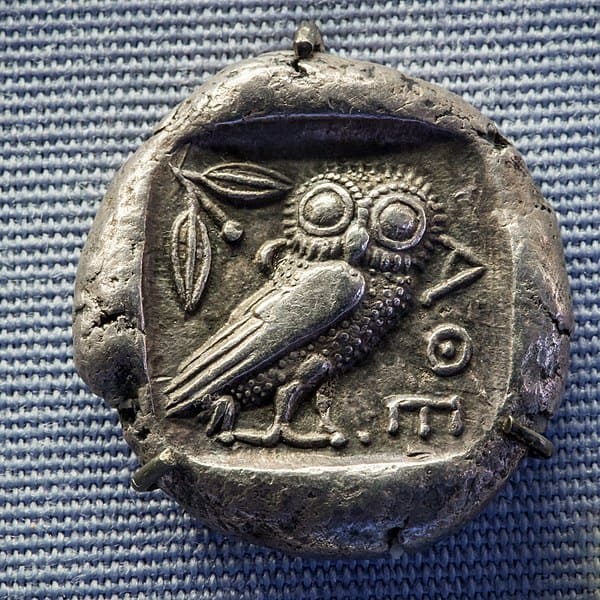
Minted around 510 BCE, the Athenian Owl Tetradrachm became one of the most recognizable coins of ancient Greece. Crafted from silver, this coin displayed an owl on one side, symbolizing Athena, the goddess of wisdom, with an olive branch representing peace. Athens issued this coin to support its powerful maritime trade network and finance public projects, including the Parthenon. The owl design made the coin widely recognizable, securing its acceptance in both local and foreign markets. Its consistent weight and silver content made it a reliable standard in trade. It also helped Athens assert its economic influence, spreading Greek culture through commerce. It remains an enduring symbol of ancient Athens, representing wisdom and prosperity. With its universal appeal, it highlights how ancient coins reinforced civic pride and economic strength.
Persian Daric
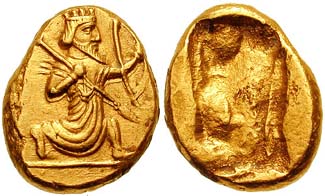
CNG/ Wikimedia Commons
The Persian Daric, introduced around 520 BCE by Darius I of the Achaemenid Empire, was one of the earliest gold coins and became an essential component of Persian currency. They were made of high-purity gold and often featured an image of a Persian archer, symbolizing strength and military prowess. The standardization of the Daric facilitated trade and commerce across the vast Persian Empire, which spanned from Asia Minor to parts of India. This gold coin was complemented by the silver siglos, establishing a bimetallic currency system that set the stage for international trade. Its durability and high purity made it a trusted currency in foreign lands, further solidifying Persia’s economic influence. Its gold content set a benchmark for high-value coins, which encouraged acceptance throughout the ancient world. The legacy of the Daric reflects the power and reach of the Persian Empire, which connected diverse cultures through trade.
Persian Siglos

The Persian Siglos, created around 546 BCE under the reign of Cyrus the Great, was among the first standardized silver coins introduced in the Persian Empire. Unlike the golden Daric, which represented high-value currency, it served as the silver counterpart, allowing for a bimetallic monetary system that promoted diverse trade. Each one was stamped with an image of the Persian king or warrior figure, symbolizing imperial power. Weighing approximately 5.6 grams, it maintained a consistent weight and design across the empire, which stretched from Egypt to parts of Asia. Its uniformity established trust in Persian currency, facilitating its wide acceptance and use throughout various cultures within the empire. Its introduction was a crucial development in Persian economic policy, allowing for smoother tax collection and commerce across conquered territories. This early currency reflects the Persian Empire’s strategic use of coinage to unify its vast territories under a single economic framework. Its influence extended beyond Persia, as its design and concept of bimetallic currency inspired neighboring civilizations, contributing to the spread of coin-based economies across ancient trade routes.
Croesus’ Gold Stater

The Gold Stater of Croesus, minted around 550 BCE, is considered one of the first coins to be made entirely of gold, introduced by the Lydian King Croesus. It featured images of a lion and a bull, symbolizing strength and harmony, respectively. Made of nearly pure gold, this Stater established Croesus as a pioneer in refining and minting valuable metals. Its quality and consistency marked a major advancement in coinage, setting standards for purity and value in future currency systems. It became highly influential, circulating beyond Lydia and impacting coinage in Greece and Persia. The use of high-value metal enhanced the coin’s reliability and facilitated international trade. This innovation underscored Lydia’s wealth and Croesus’ ambition to leave a lasting legacy. Its use of pure metal reflects early advancements in metallurgy and the increasing importance of monetary stability.
Ephesus Bee Coin

The Ephesus Bee coin, minted around 550 BCE in the Greek city of Ephesus, features an intricate bee design symbolizing Artemis, the patron goddess of the city. These coins, crafted in silver, were highly valued and became an iconic symbol of Ephesian culture. The reverse side of the coin bears an incuse square pattern, characteristic of early Greek coinage. Ephesus was a prominent trading hub in Asia Minor, and the coin’s design was widely recognized across the region. The bee symbol represented industriousness and community, attributes highly regarded in Ephesian society. This coin was integral to both local and regional trade, showcasing the influence of religious symbolism in ancient commerce. Its unique iconography and historical context make it a valuable artifact of early Greek coinage. With its links to Artemis, it illustrates how religious symbols influenced economic transactions in ancient Greek culture.
Aegina Sea Turtle
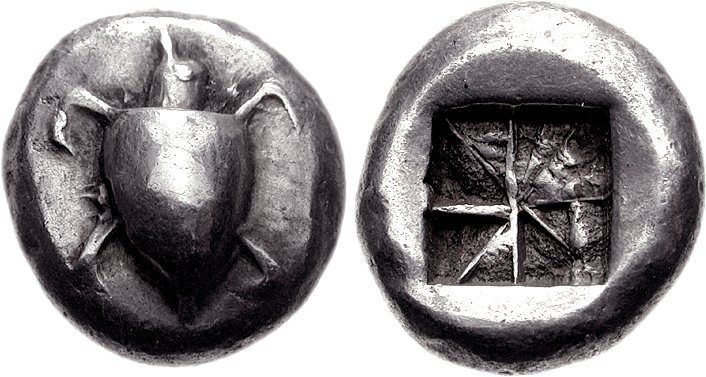
Minted around 550 BCE on the island of Aegina, the Aegina Sea Turtle coin is among the earliest Greek coins used for trade. Its silver composition and characteristic design of a sea turtle on one side symbolize the island’s connection to the sea and its economic reliance on trade. Aegina, being a significant naval power, used these coins to facilitate extensive trade throughout the Aegean Sea and beyond. The reverse side of the coin featured an incuse square, typical of early Greek coin designs. As one of the first coins used in intercity trade, it set a precedent for currency as a means of international exchange. Its simple but recognizable design made it convenient for traders and easily distinguishable in the markets. It also reflects the maritime influence on Greek culture, underscoring Aegina’s importance in ancient commerce. The widespread acceptance of Aegina’s coinage marks a pivotal development in ancient economies, further linking Greek city-states through standardized currency.
Karshapana
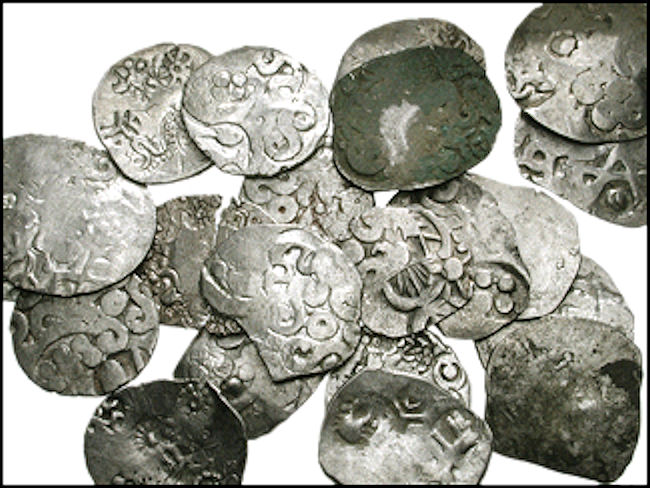
The Karshapana, an ancient Indian coin, was first minted around 600 BCE and is considered one of the earliest coins of the Indian subcontinent. Made primarily of silver, they were produced by various Indian kingdoms, notably the Mahajanapadas, as a way to facilitate trade. Each one was punch-marked with symbols, a distinctive feature of early Indian coinage. Unlike circular coins, it had an irregular shape, as the metal was cut from sheets and stamped. This currency represents early Indian advancements in creating a structured economy and trade system. The unique punch-marking style also offered a way to verify authenticity, an important feature in ancient commerce. As trade expanded, these coins gained acceptance across diverse regions of ancient India.
Ying Yuan
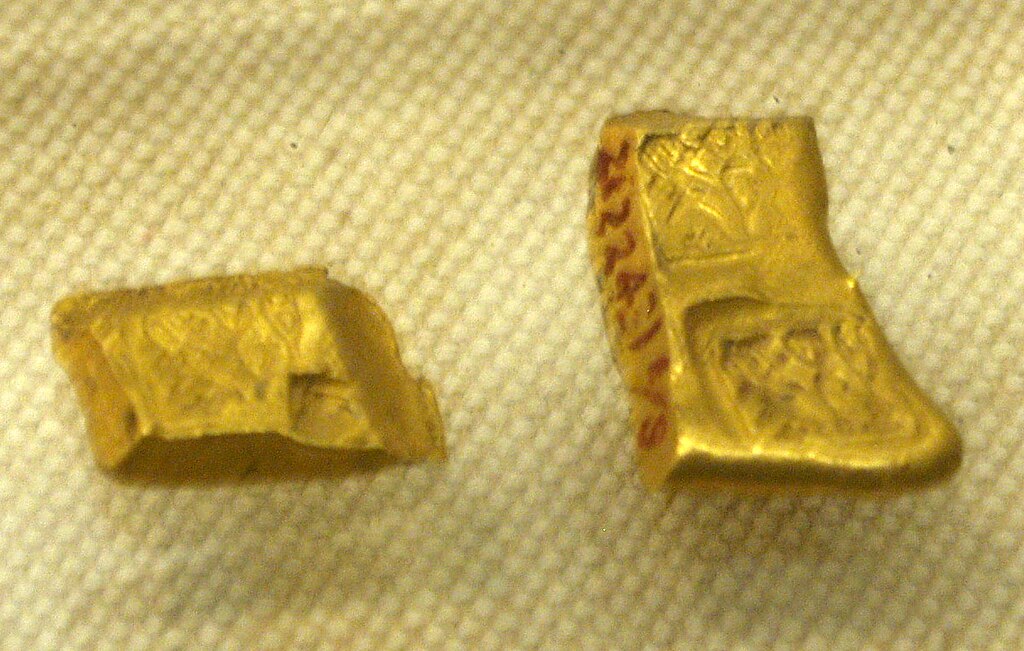
The Ying Yuan, originating in China around 600-500 BCE, is recognized as one of the earliest forms of Chinese coinage. Made of gold, these square coins were stamped with inscriptions indicating their value or weight, symbolizing early efforts at standardized currency in ancient China. They were produced during the Warring States period by the State of Chu, showing the move toward a structured economy. They are unique in that they were made of gold, contrasting with the more common bronze and copper coins of ancient China. The adoption of currency in the State of Chu promoted local economic growth and established a model for later dynasties. They illustrate how Chinese coinage evolved independently from Western influences, with a distinct approach to shape and design. The square shape and inscriptions reflect the aesthetic and practical priorities of the time. As China’s earliest known coin, it is a precursor to the diverse and complex currency systems that developed in later dynasties.
Lydian Lion
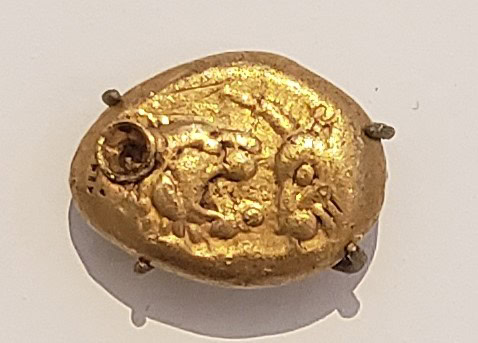
The Lydian Lion, minted around 610-600 BCE, is widely recognized as one of the world’s earliest coins. Originating from the ancient Kingdom of Lydia, in what is now western Turkey, they were crafted from electrum, a natural alloy of gold and silver that could be sourced locally. Each one was stamped with an image of a lion’s head, a symbol associated with the Lydian royal family, symbolizing power and strength. The coinage system introduced by the Lydians laid a foundation for economic exchange, moving away from barter to standardized currency. They ranged in size and weight, with the largest weighing approximately 4.7 grams. These were widely circulated and highly influential in spreading coinage across ancient Greek territories. With their distinct design and historical significance, they offer insight into early financial systems and royal iconography. Additional details highlight that they helped establish Lydia as a prosperous trade center, benefiting from a resource-rich location by the Pactolus River, which was abundant in gold and electrum.
Egyptian Deben

The Egyptian Deben, dating back to around 2000 BCE, is one of the earliest known forms of currency, though not a coin in the traditional sense. Made from rings or bars of copper and sometimes silver, it served as a unit of weight in ancient Egypt’s trade system. The value of it was based on its weight, facilitating transactions in grain, fabric, and precious goods. Though not stamped or minted, its usage set a precedent for later coinage by providing a measurable standard for economic exchange. Egyptian merchants and farmers used it in trade transactions within and beyond Egypt, highlighting its adaptability. Over time, it influenced later Egyptian coinage practices, serving as a foundation for Egypt’s structured economy. This early currency underscores the role of weights and precious metals in ancient barter systems. It is a reminder that even before coins, standardized measures facilitated trade, shaping the economic practices that led to coinage.
This article originally appeared on Rarest.org.
More from Rarest.org
15 Bizarre Geological Features Found in Remote Regions

The world is filled with incredible natural wonders, but some of the most fascinating geological features are those tucked away in remote corners of the globe. These bizarre landscapes, shaped by millions of years of natural forces, captivate with their unusual formations and striking beauty. Read More.
12 Classic Cars Abandoned in Barns Now Worth Millions

Classic cars often carry a unique charm, but some of the most iconic ones have been left abandoned in barns, forgotten for decades. Hidden away and covered in dust, these cars have gained new life, becoming treasures worth millions. Collectors and enthusiasts are now discovering these relics, restoring their former glory, and witnessing their value skyrocket. Read More.
22 Unusual Insects Native to the World`s Most Remote Jungles

Deep within the world’s most remote jungles, some insects defy the imagination. These creatures are often stunning, bizarre, and unlike anything you might find in your backyard. Read More.
